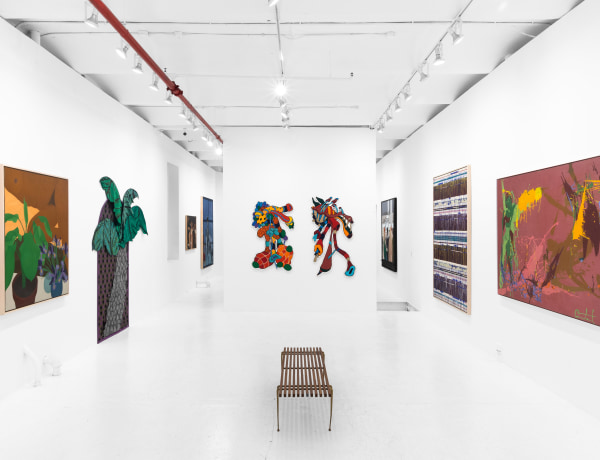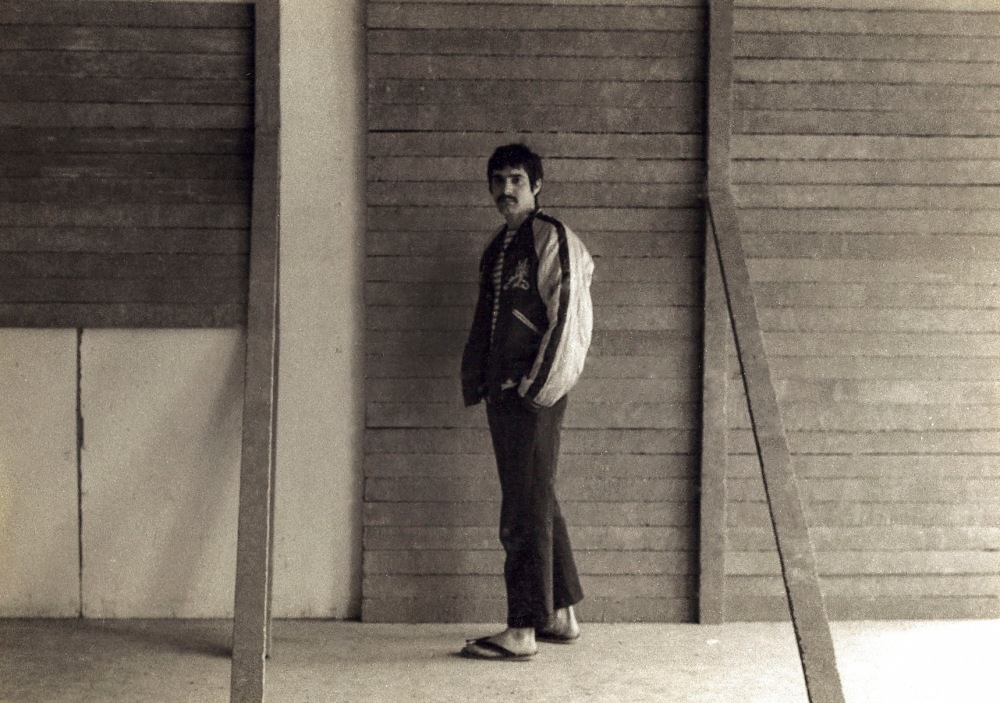

Ned Smyth in his stuido on Delancey Street in New York, 1972
B. NEW YORK, NY, 1948
Ned Smyth is a sculptor whose early work came out of minimalism before developing an intimate relationship with pattern and organic forms. Smyth began exhibiting in 1973 and his close artist circles included Gordon Matta Clark, Jene Highstein, Richard Nonas, and Mary Heilmann. Working as a carpenter, as well as looking at the repetition of simple units in the work of Frank Stella, inspired him to cast 2 x 4s in concrete. These were installed in different configurations—leaning, standing, flat—in order to activate architectural spaces. His cast concrete slabs and panels gradually evolved into highly simplified versions of arches, columns, and altarpieces.
Smyth is the son of a Renaissance art historian and spent much of his childhood living in Italy and being taken to temples, museums, and churches. He began to embrace these sources and increasingly considered the garden as an original reverent space. His first exhibition with Holly Solomon in 1977 featured a cloistered space with the repetition of unadorned concrete forms, combining his interest in medieval art with his minimalist practice. In the years that followed, Smyth began covering the cast concrete columns in mosaic, which extended onto elaborate capitals. These were sometimes installed with fabric wall coverings.
Smyth’s sculptures and installations became associated with the origins of the Pattern and Decoration movement in the mid-1970s. He showed with Holly Solomon Gallery, and credits Solomon, who also showed the work of Kim MacConnel and Thomas Lanigan-Schmidt, as an instrumental supporter and collaborator in the burgeoning P&D movement. Often his wall-reliefs and planters were also used as planters. Sculptor Ugo Rondinone has said of Smyth’s practice:
Ned Smyth is an artist whose work connects us with our sources in the natural world—its beauty and terrors and mysteries and connotations. His palm tree sculptures are not only an investigation of the mutable potential of sculpture as both a physical medium and a site of rich cultural disclosure in art, but also a celebration of life; its seasons and rhythms, its plants, and stones with which we share the planet and our own wildlife.
Smyth’s work has been exhibited at the Museum of Modern Art and the Whitney Museum of American Art, both New York; PS1, Queens, NY, the Hirschhorn Museum, Washington, D.C., and the Venice Biennale, among others. His work is in public collections including the Whitney Museum of American Art, New York; the Parrish Art Museum, Southampton, NY; the Carnegie Museum of Art, Pittsburgh, PA; and the Museum Ludwig, Cologne, Germany. In the summer of 2023, Smyth was the subject of Origin Story—a two-person show at Eric Firestone Gallery, East Hampton—where his ceramics and mosaics from the 1970s–80s were displayed alongside the paintings of Michael Rosch. Smyth lives and works on Shelter Island, New York.